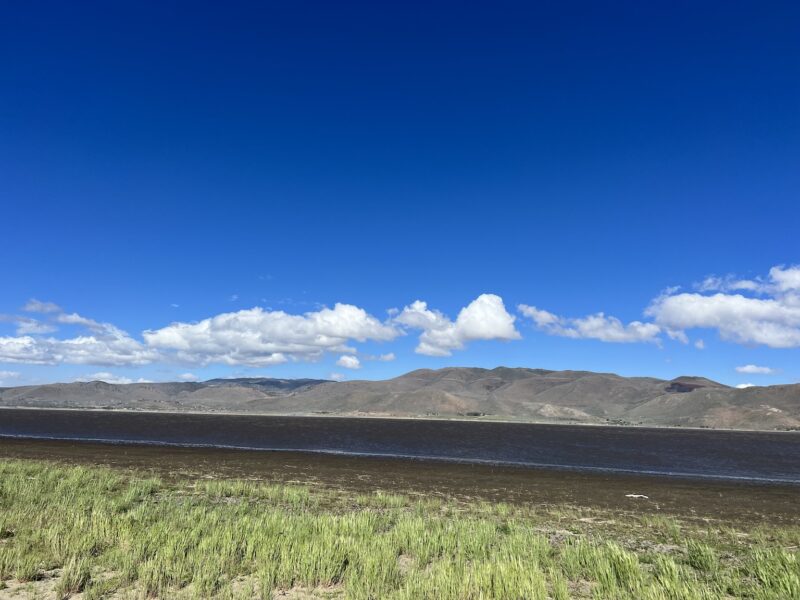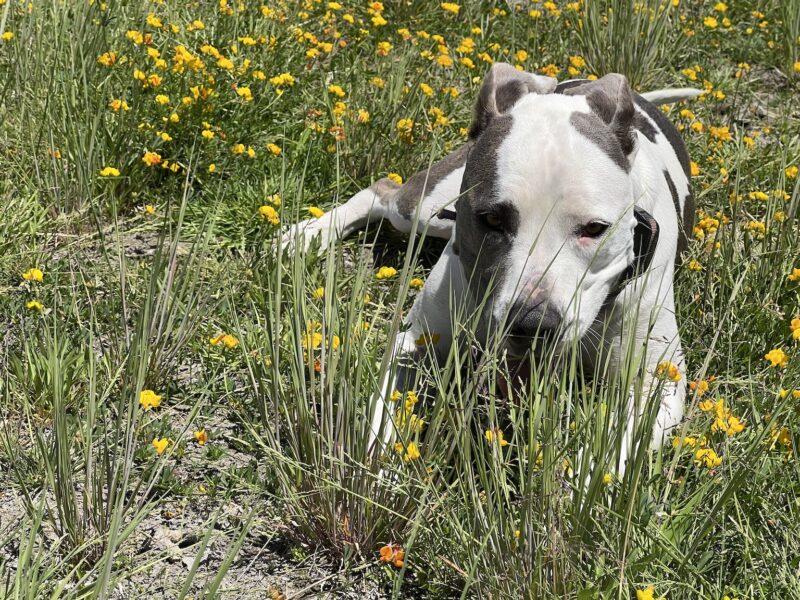
Late last week I decided that I wanted some time outdoors and wanted some radio play. The previous weekend I was recovering from travel and testimony and just did not feel like doing much. This weekend I did not want to stay indoors all weekend.
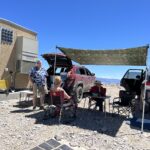
We drove out Saturday morning, then worked our way up the steep trail to the activation zone. I setup the radio while the others setup shade and a table to work from. I used the KX3 with the KXPA100 for this outing. I knew that the phone operators would need more power to get out. I also setup the Chameleon MPAS 2.0 in the vertical configuration. I put out a couple of solar panels to keep the battery topped off.
We were ready to go before my scheduled time, so I chased another operator activating a summit on phone and logged him. Then I handed off the mike to another operator.
After an hour or so the other two operators almost had their quota. It takes four contacts to make a SOTA activation. Both operators had three contacts and a couple of summit-to-summit contacts as well. Those count extra because one receives both points as an activator and as a hunter. They were ready for a break, so I sat at the radio, listened on 15m, and then spotted myself on the SOTA website.
I was running CW Mode (Morse Code) and started sending my CQ so chasers would see/hear my signal. It did not take long until I had my first contact. I continued to work stations and also chased a few other SOTA activators during my turn.
After an hour or so I had a dozen contacts, more than enough for my activation. I handed over the radio to another operator so she could finish her quota.
Both other operators made their activation of Fairview Peak. It is more difficult when running phone than running code. It is one of the primary reasons I elected to learn Morse Code.
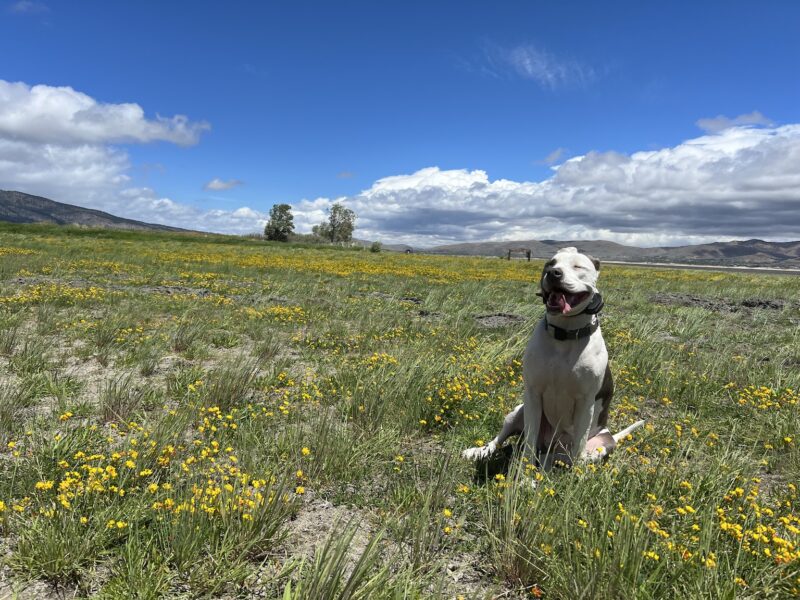
Sunday morning I decided I wanted to be outside. The weather was to be cooler, if more windy. I thought about doing another summit, but decided that the wind would be worse at elevation. Therefore I elected to do a park activation.
The Girl and I had breakfast, I finished cleaning up the dishes, and I put a load of laundry in. I grabbed the Discovery TX-500 transceiver and PA500 amplifier and carried them out to the rig. The Girl and I headed out and I noticed the wind was already up. I knew it was going to be windy at the lake.
I decided to activate Washoe Lake State Park again. I intended to do some testing of a new off-center fed dipole, but decided that it was too windy. So I used the Chameleon MPAS 2.0 in vertical configuration again. It is one of my go-to antennas.
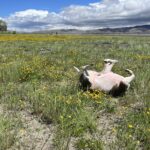
On return to the rig, I put down her mat so she could be comfortable while I deployed the station. I put up the antenna near the water and brought the coaxial cable back to my table. I got out the Discovery TX-500 and the PA500 and assembled them. I also put out a solar panel to keep the 4.5Ah Bioenno battery charged.
I staked the solar panel down. The wind was rising! After getting everything assembled (a few minutes), I put The Girl in the rig as it was just too windy.
I checked in to the 40m Noon Net (7.2835MHz) to confirm the station was working. Then I chased a few POTA activators on phone. When I tried CW mode, the monitor level from the TX-500 was too low for me to hear my sidetone. That meant I could not be sure I was sending correctly, having no audible feedback.
So, after futzing with that for awhile, I put the TX-500 away and got out the Elecraft KX2. I know this radio and was able to run my frequency easily. I completed my quota with a couple of stations to spare.
I was freakin’ miserable. The wind was strong enough to make me cold, even in the lee behind my rig. I was sandblasted. I was worried the antenna might fail. My hands were cold so sending was difficult.
When other operators stopped answering my call, I paused for a few minutes to see if there would be any stragglers. Then I posted myself QRT (done) and started putting away my station. Again, this took only a few minutes.
I then got The Girl out of the rig for a final walk (very short) and made an image of the lake shore. The wind was strong enough that the lake retreated from the western shore by about ten feet. That meant there was enough setup of the lake surface to lower it on my side by three or four inches. (It would be three or four inches higher on the lee side of the lake as well.)
I knew that this is an observable physical phenomena. It is one reason why dams have freeboard required (extra height from the nominal water surface elevation to the dam crest). Winds can push the water around and by more than one might think. This was a perfect example, in real life, of something I have known was possible my entire professional career.
How cool is that?
In any event, I came away with a few lessons:
- Setting up and operating in marginal conditions is an important part of training for operations when conditions are poor.
- I have a guying kit for the MPAS 2.0 vertical. I should get it out and test it. It would have been a good addition to Sunday’s deployment.
- Be prepared to stake things down. I staked the solar panel Sunday. If I had not, then it would have blown away.
- Even if the weather looks good, always have a cover to keep warm. It is possible to get cold even when the temperature is 70°F.
- I must figure out how to adjust the monitor volume on the TX-500. If I cannot hear the sidetone, I cannot reliably send code.
- Always have an alternative setup planned. Redundancy is the key to making an operation work. In this case, it was having an alternative antenna (the vertical) and a backup radio (the KX2).
- It would be good to have the ability to make hot drinks and hot chow in the rig. If I (or someone else) gets cold, then hot chow will help get me warm again. I have a spare campstove and kettle. I just need to put them into the rig.
- Always have a few spare parts at hand. I needed an coaxial cable adapter and had to scrounge one from another radio kit. I should assemble a small kit of adapters and jumpers.
I suppose there are more lessons learned this couple of trips. I need to start a new list in my notebook.
In the end, it was a very good weekend. I spent time outdoors. I spent time with The Girl. We spent time with friends. I operated the radio.
Life is good.
